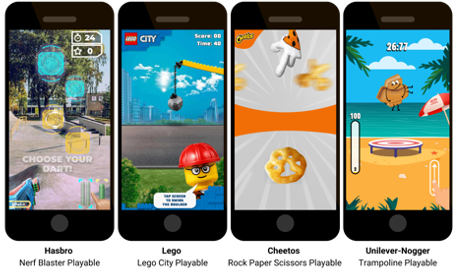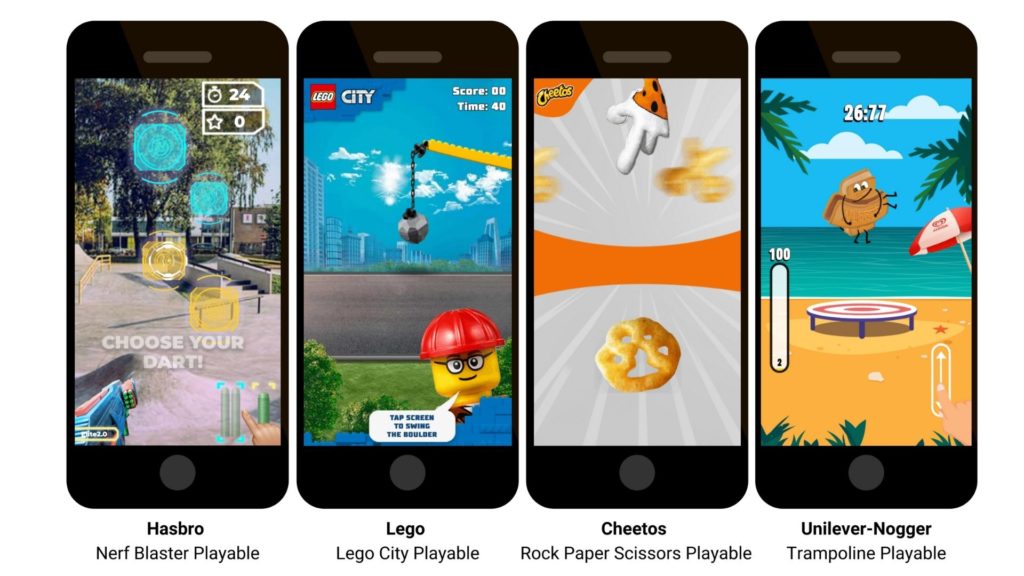By Gokce Nur Oguz, CEO and Co-Founder of Playable Factory
The mobile gaming industry has a rich heritage of driving innovation and creativity in the mobile advertising world. From developing new ad formats to putting rigorous A/B testing at the heart of their product, mobile games are often the trendsetters for the wider mobile ecosystem.
One such innovation is playable and interactive ads. The new kid on the block as far back 2016, they’re now ubiquitous in mobile gaming and heavily relied on for user acquisition. By offering users interactive experiences and with robust calls to action, playable ads grab attention, measurably boost conversion and retention rates and deliver a higher eCPM. They’re a world away from the 30 second-long static interstitial ad that users might otherwise be locked into viewing.
In mobile gaming, playable ads have typically been used to offer gamers a free snapshot of gameplay with the aim of driving user acquisition and filtering out non-committed potential users. As well as playables for mobile games, gamified brand experiences have become increasingly common, with the ad format tailored to provide a variety of calls to action beyond installs. This is a natural progression of the success of playable ads and part of a growing trend of gamification across the entire app ecosystem in response to increasing consumer unresponsiveness to traditional digital ad formats and targeting using personal data. Let’s take a look at some of key early examples of non-gaming brands embracing interactive ads that provide a blueprint for brands looking to get into interactive advertising.

A key advantage for brand marketers and agencies is that the infrastructure for their interactive ads already exists thanks to mobile games. As they embrace interactive ads, they can use the technology, methodologies and process developed for playable ads over the past five years. In recent years, this enabled Playable Factory to expand its business towards non-gaming brands, developing campaigns for Hasbro, Lego, Cheetos and Unilever to name a few.
That these brands are empowered to get into interactive ads can in no small part be attributed to early trailblazers such as Burger King. In 2017, Burger King’s ‘The Angriest Whopper’ campaign set the German market aflame. With the goal of promoting one of its newer menu listings, the global fast food brand integrated playable ads in the form of a mini-game into its mobile app. There, players were tasked with collecting 20 Jalapeños in 20 seconds in exchange for exclusive discount coupons that could be used at restaurant outlets.

Image credit: Burger King
Just two weeks after it was launched, the ads had garnered 336,700 games played along with a click-through rate of 40.25% and over 135,000 coupons won.
That same year, the fashion industry witnessed a similar use case of playable ads in the form of Hollisters ‘Shredding Venice’ creative. By creating season-themed 16-bit playable ad units (one for spring and another for Back-to-School), the teen apparel brand was able to grab and hold the attention of Gen Z’ers for nearly a minute, a feat that still eludes thousands of advertisers in 2021.

Pan the near-past and we have even seen playable ads being used in a sector many would have never thought possible: politics.

The Biden/Harris 2020 Presidential Campaign was a flawless demonstration of the versatility of interactive ads. With the COVID-19 pandemic eliminating much physical activity, campaign teams realized voter awareness had to be spread through unconventional methods. Hence, gamified ads.
By pairing video ads with interactive end cards, the Biden Campaign was able to release an 8-bit interactive ad which allowed players to drive their candidates to the White House. The results? While we can’t attribute an election win with the most votes in history solely to the ad, at 12 million views, $0.66 CPC, and a 9% click-through rate, it goes without saying that the campaign was a resounding success. Its cost effectiveness and record-high engagement highlight just how much brands stand to gain from playable ads.
By default, many non-gaming brands assume gaming and gamified content are incongruent with their industries – an untrue but understandable notion based on legacy views of gaming and gamers. Still more brands continue to be unsure on how to access the infrastructure behind interactive ads.
Yet, as users – particularly Gen Z – become unresponsive to banner ads and other traditional digital advertising formats, interactive advertising is set to become more the norm for brands wishing to reach and engage with consumers. And while mobile gaming brands may enjoy a healthy head start, non-gaming industries can experience just as much success.












